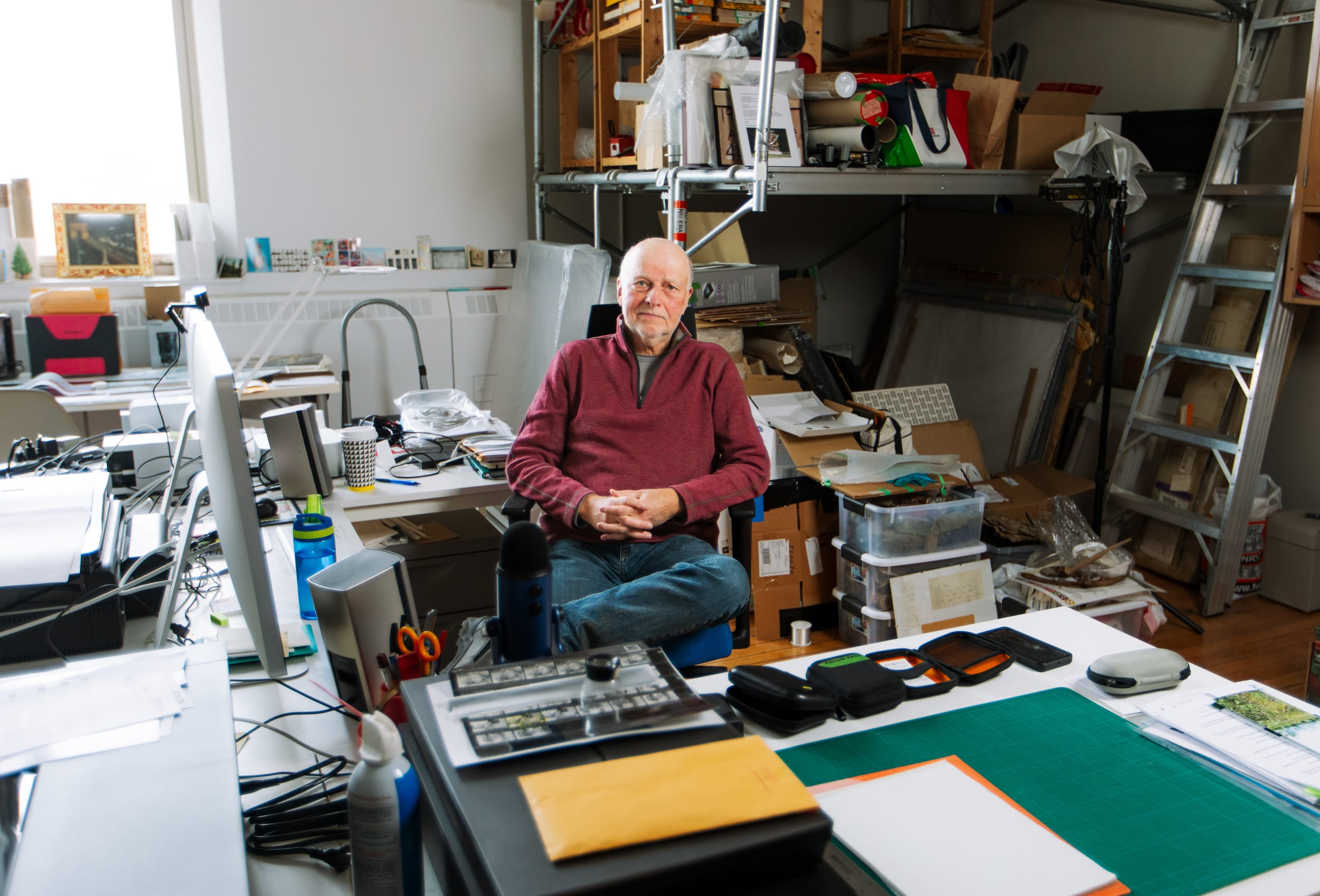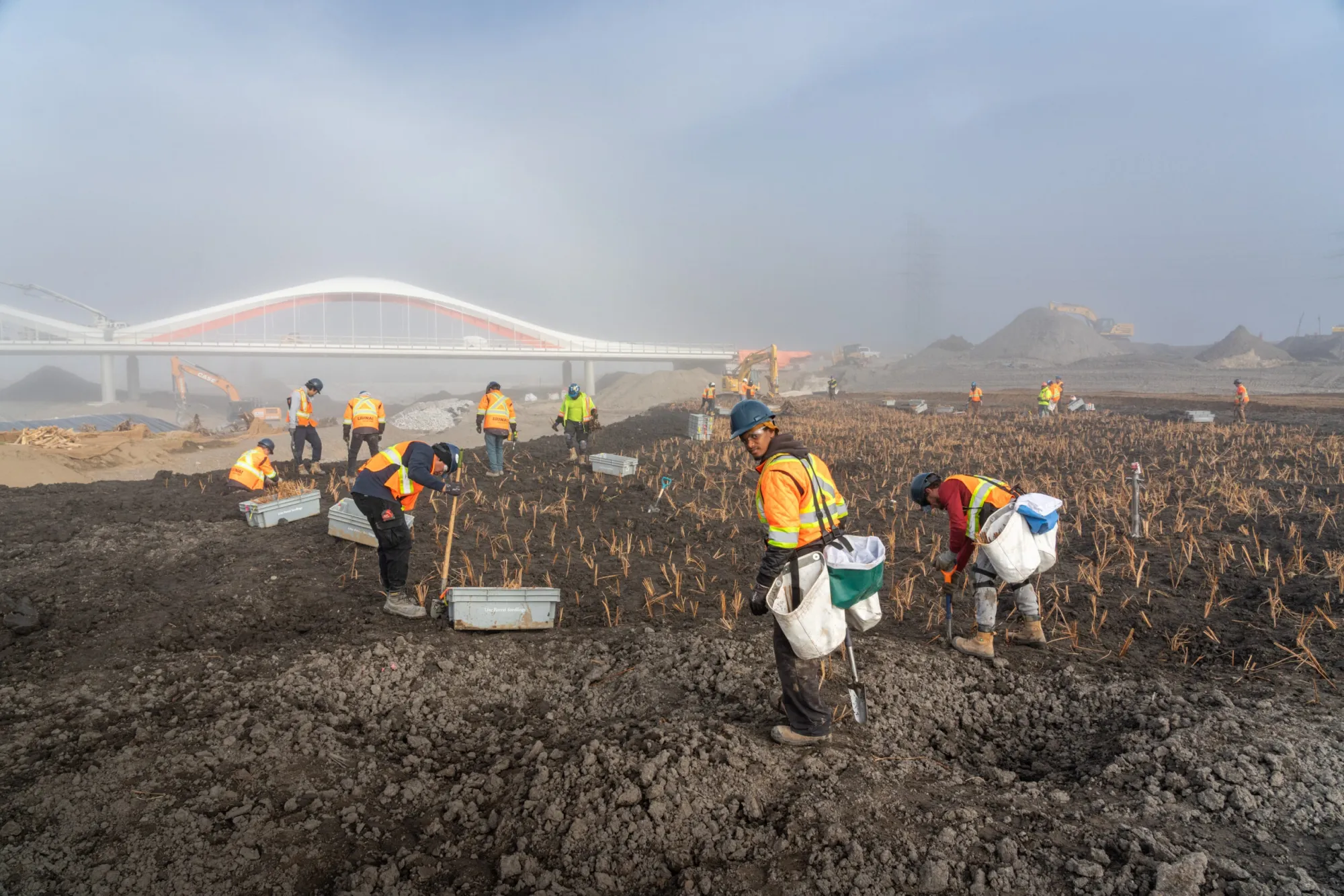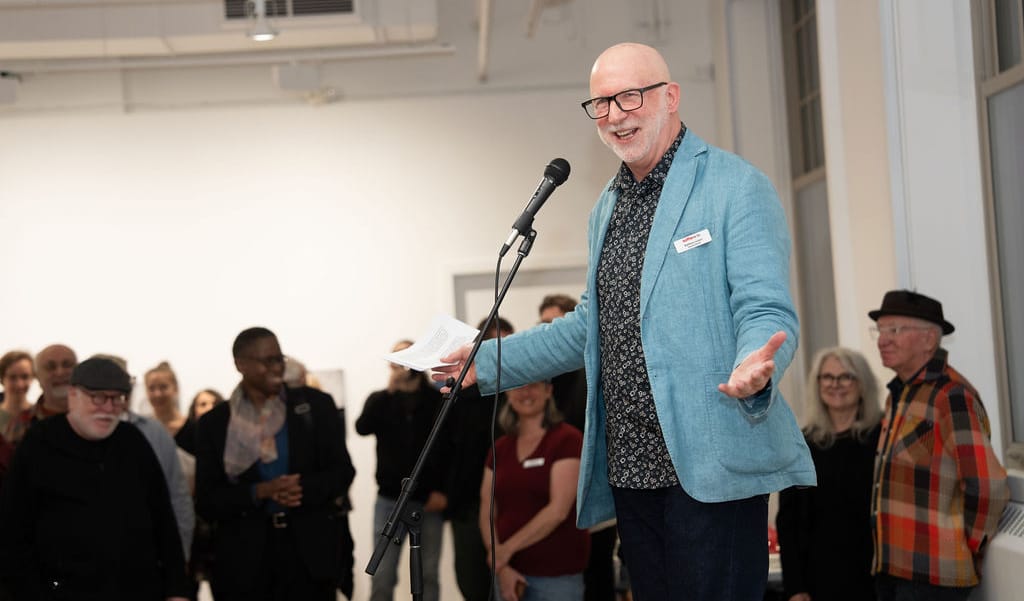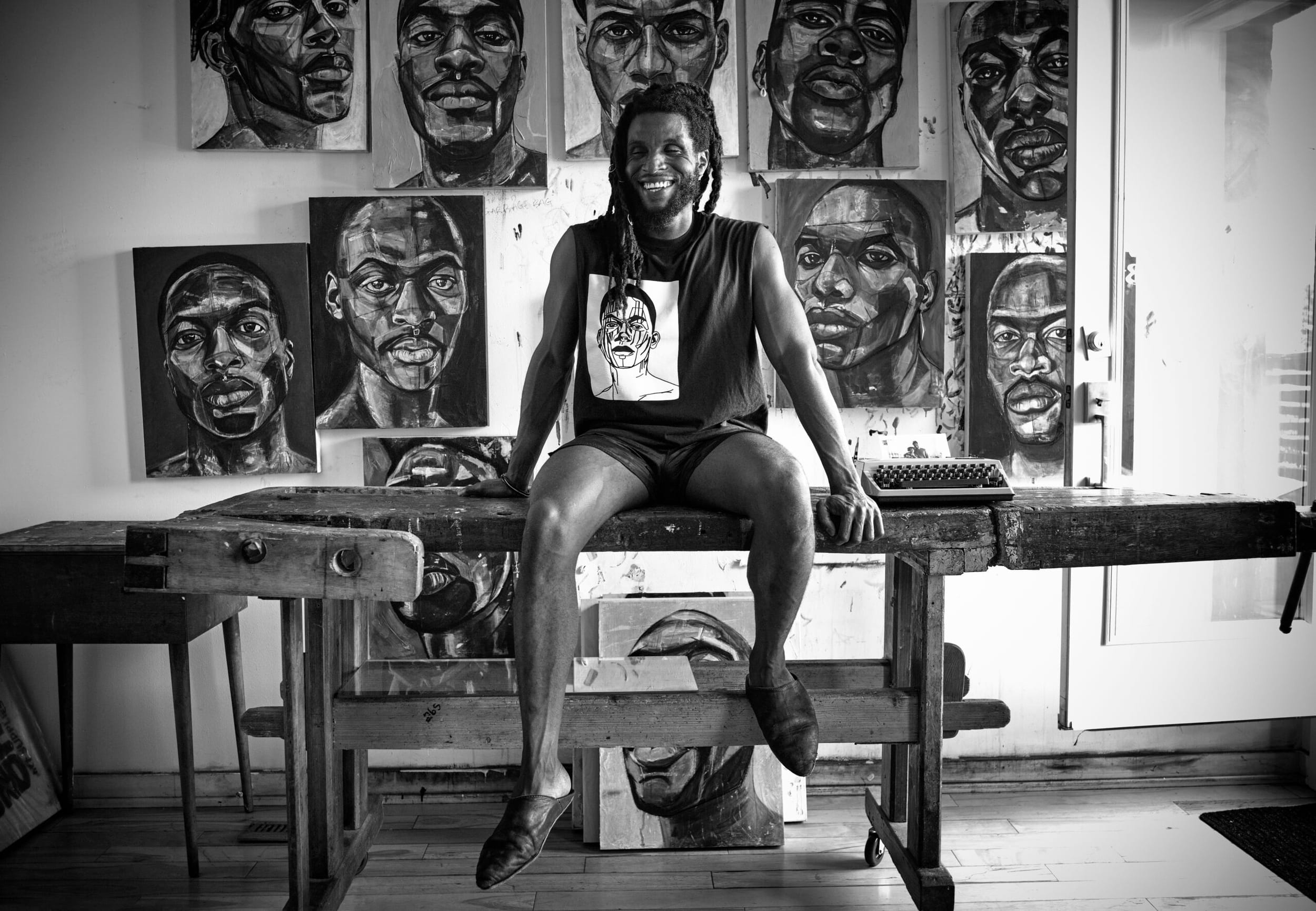Recording Time and Transformation in the City
The work of photographer of Vid Ingelevics, currently showing in the group show DECADE at Koffler Arts, documents moments of civic transformation with surprising intimacy.

Vid Ingelevics’s photographs are often shown in the places where they were taken. On Commissioners St. in Toronto, photographs by Ingelevics and collaborator Ryan Walker are mounted on small, temporary billboards, as part of their ongoing documentation of the Port Lands revitalization project. Meanwhile, at the many galleries where he shows, including Toronto’s Stephen Bulger Gallery, Ingelevics often engages in a kind of metaphysical inquiry by hanging photographs themselves taken in museums and art institutions. Viewers are often made to stop and consider the environment they’re standing in.
For the group show DECADE, currently at Koffler Arts, Ingelevics continues his study in site specificity by exhibiting a series of photographs taken from his studio window at 180 Shaw St. Shot using his iPhone, the images are more casual than Ingelevics’s usually crisp, large-format images of architecture and infrastructure, and shown on a screen in a continuous slideshow—the medium of the screen replicating the format they were taken from. The effect is intimate—the photographs aren’t perfectly framed, nor is that the point. In some photos, the side of the building appears. Buildings change, construction stops and starts, as do seasons. While there are subtle discernible differences, there’s also the sense of things staying the same. The foundation of a city remains the same as details rise and fall. This is what Ingelevics captures in his series for DECADE.
*
How would you describe the work that you’ve included in the DECADE exhibition?
I was actually in the very first Koffler gallery exhibition 10 years ago, when they first moved into the building, in one of the raw spaces that was once the library of the public school. For that I collaborated with the school kids who used to be here, creating an animation out of drawings they made. For DECADE my first thought was, “Oh, I'll go back to 10 years ago and show what I originally showed here.” But I couldn't find the file animation file.
I have been doing impulsive, casual photography from the window of my studio since I first moved in almost 10 years ago, consistently photographing out the studio’s window, roughly framing the picture the same way. Every so often, when I’m kind of bored, I look out and see what buildings are looking really interesting and take a picture. I’ve accumulated hundreds of these pictures over the years. I realized that it was actually kind of appropriate for DECADE, because there’s almost a decade’s worth of photographs here. It’s a record of the time passing,
Can you describe what your studio looks like, given that your series for DECADE is, in its own way, as site specific as your previous works.
Every photograph implies its site of origin, and the place I’m shooting from, of course, is my studio window. If you imagine a cone coming out from the camera that encompasses the view, if you follow it back, you always come back to the place where the camera was set. In this case, it’s standing in one of the windows of my studio. It’s an old public school. It’s got those big windows that are at least 10-feet high, and about two or three feet wide. I kept a lot of the furnishings from the public school. I have a set of cupboards and shelving that were also part of the original school. I have the hooks where the kids hung their coats running along the wall. There’s also a wall where I have some maps of the project out on Port Lands. I have a lot of books. Mostly I’m working here on my computer. And I have some of the stuff that I found out in the Port Lands, artifacts from the site. That’s what my studio looks like, it’s a very good place to work.

Let’s chat about the Port Lands project. You photograph nature a lot, but also interior spaces and architecture. Maybe the Port Lands is a mix of those two things together?
The urban site is fascinating for a lot of reasons. I’ll step back a little bit and say that as a high school student, I worked at the Port Lands. My father worked at a company called Smith Transport, which was on Commissioners St., and when I was in high school I worked there during summers. It was a strange, dirty, grimy area, the way that industrial lands often feel, like nobody really cares. It’s just raw space where anyone can do what they want. There were incredible smells in the air, with the Lever Brothers soap factory nearby emitting all kinds of interesting odors. Then there were the fuel tanks that polluted the land because of leakage and they’re still dealing with the consequences of that.
What I found amazing was that the motivation for changing the site was to bring back some of what was once there. The project has always had an environmental side to it. There’s the whole issue of flood protection, trying to stop the river from overflowing its banks and covering half of downtown Toronto if we have a major storm—increasingly a possibility with climate change. They’re creating new wetlands, there’s a new mouth to the Don River. There’s plantings going on. This was not a particularly green area for many years. Now, there’s greenery already starting to sprout. It’s an amazing sight in the sense that it’s an engineered kind of nature. The wetlands, the edges of the river, the way the plantings are put in place, everything about it is engineered, but all of it is engineered based on how nature functions in other places.
How often do you go down there?
I’m working with a collaborator Ryan Walker, we won the commission together back in 2019. For the most part, we’ve been down there almost every week for the past four years. We’ve seen a lot and we’ve missed a lot too. It’s such an intense site, so big, and there’s so much going on in so many different parts that there’s no possible way we could ever claim to have a comprehensive documentation of what’s going on there. It’s really daunting at times.
We’re not interested only in the big things. For example, when the new bridges designed for the area arrive on barges coming down the St. Lawrence River—that’s a major event. But there’s also smaller stuff going on all the time. The whole site went from looking like an industrial version of Canada’s Wonderland, beginning with these huge machines digging out the river and excavating the area, through to now, when you get large numbers of people planting and weeding all the time. Right now, it's almost like farming. Ryan and I just wander because we have no idea what we’re going to come across sometimes. That’s part of the fun of being there, just trying to see what’s going on somewhere that was unexpected and wasn’t highlighted as a major event.
What is the importance of archiving something like this? You’re documenting the transformation of the Port Lands for posterity, at the same time as you’re taking photographs out of your studio window, capturing the passage of time in the city. Where does this sense of archiving the city fit into your practice?
There was never any doubt that some significant chunk of this work we’re doing would end up in the archives. One of the things that’s really amazing about this commission from Waterfront Toronto was they commissioned us as artists, not as industrial photographers. To be able to follow this process on the site over four-and-a-half years, and to make so many different kinds of pictures, is truly unprecedented. We look back to the early 20th century when the city of Toronto hired its first staff photographer, Arthur Goss, who documented the construction of the Prince Edward Viaduct that spanned the Don Valley, connecting Bloor St. with the Danforth. He did an amazing job working with a huge view camera, shooting the process of constructing this bridge and the workers involved. It’s probably the last time in the city something that big was documented over a long period of time.
We look back at Goss’s photographs and find all kinds of great details. When Michael Ondaatje was researching his novel In the Skin of the Lion he looked at Goss's photographs. We feel honoured to be in that company. But it’s so rare, it’s a really unique commission. This is not the way in which construction is usually documented.
It will be amazing to look through our images in 30 or 40 years and think, “Wow, look at what they did down there. Because nothing that we photographed will be visible anymore. All of the work of constructing the river, the ways that the riverbanks were stabilized, it’s either going to be underwater or covered with plants. The parks will be finished, they will all look perfect. That’s what our images will reveal to people: that there was an incredible process that happened in the city and the city did something truly visionary.
You used the word reveal, which is an interesting choice of words. I wanted to ask about the meta quality of your photographs. For example, if you go to Commissioner St., you can see your photographs in situ, in the place that the photos were taken. And you often take photos of art institutions and display them in galleries. Now you’re showing these photos taken from your window at 180 Shaw in the same building.
The historical nature of things is something that always fascinates me because what we see today isn’t necessarily what existed maybe even last week. There’s an assumption of time just marching on, but I think it’s fascinating to be made aware just how much and how important it is to understand that human beings are capable of these things. Our work concentrated a lot on the workers because something like this doesn’t happen like a miracle. There’s an enormous amount of human labour that goes into it, and that’s something that we really wanted to emphasize. Our work aimed to restore the nature of labour on the site.
It seems that you’re interested in depicting Toronto. What importance does Toronto have as the site of your photography? Or is it just where you happen to live?
The fact that I worked on Commissioner St. as a teenager is really interesting to me. I have a memory of that area when it was quite different. That’s not the kind of thing I would ever be able to bring as a visitor to another city. There’s a special kind of knowledge that we, who are born and bred Torontonians, have. Although my family are refugees from Latvia, from right after the war, I was born here a year or two later.
It’s like putting on comfortable clothes, being in a city that you know, walking down its streets, it’s familiar. It allows you to be aware of the changes because they can sometimes come so rapidly. Downtown Toronto is unrecognizable to me in certain places, I can remember when a lot of it was kind of a wasteland. I think there’s a special kind of relationship one has to place. Maybe that’s what’s really prompted me to be interested in the idea of place. Urbanism, how a city is built and structured, how people make decisions, and how a city evolves has always fascinated me. I have done a lot of works, different projects over the years about different parts of the city. That certainly is a thread that runs through my work. You can see that it’s obviously linked up to my interest in archives and museums. There’s a whole obsession with how the past is represented.
DECADE continues at the Koffler Gallery until May 12, 2024.





